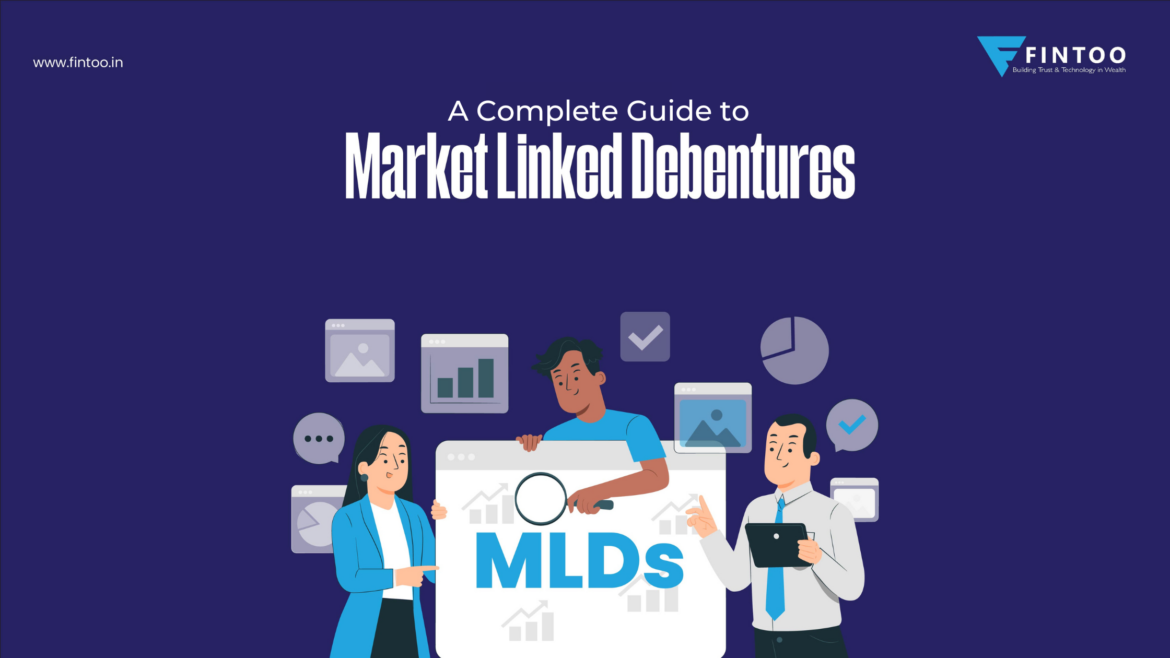

Over the past few years, market-linked debentures have been gaining much popularity in India against their counterparts. These structured products come with unique features and various benefits available to investors. However, the concept of these debentures is yet unclear. The Indian debt market has been showing great interest in these debentures and thus it becomes crucial to understand the complexity behind these Market Linked Debentures. Through this blog, we will decode the concept, features, advantages, and recent changes in the Union Budget of 2023 with respect to market-linked debentures.
What are Market Linked Debentures (MLDs)?
Market Linked Debentures (MLDs) are a type of debt instrument that provides returns based on the performance of an underlying index or security. When the underlying security or index does well, the return on MLDs will be high and vice-versa. While the underlying security to which the MLDs are linked is at the discretion of the issuer and the same needs to be related to the market with the indices such as Nifty 50, SENSEX, etc., or securities like equity, debt securities, government securities, etc.
MLDs usually offer positive returns at the time of redemption, based on the performance of an underlying index or security while guaranteeing the principal amount back, even if there is a downside in the performance of the underlying index or security that makes MLDs a safer option than directly investing in such indexes which may cause a loss on investment as well.
How Market Linked Debentures are issued?
MLDs just like debentures can be issued through the public issue as well as by private placement. No restriction has been specified by the regulator in this aspect. However, MLDs in India is majorly issued on a private placement basis. As per CRISIL ratings, MLDs worth about ₹ 21,000 Crore have been issued since April 2022 by 70 NBFCs.
Types of Market-Linked Debentures
There are primarily two types of MLDs issued in the market which are:
Principal Protected MLDs: These MLDs offer protection of the principal investment, meaning that the investor is guaranteed to get back their original investment, regardless of the performance of the underlying assets.
Non-principal protected MLDs: These MLDs do not provide any protection for the principal investment and the returns depend solely on the performance of the underlying assets. Investors may face the risk of losing their principal investment if the underlying assets perform poorly.
Key Features of Market-Linked Debentures
The key features of MLDs are as follows:
- The minimum amount of investment required to invest in MLDs was ₹25 Lakhs which is now brought down to ₹1 Lakh, effective from 1st January 2023.
- MLDs are generally issued for a tenure of 1 to 5 years.
- MLDs are regulated by SEBI (Securities and Exchange Board of India)
- MLDs do not pay any regular income; the payment is made only at maturity.
- MLDs can be customized to cater to the needs of a sophisticated investor base.
- MLDs are rated by independent Credit Rating Agencies.
Difference between Bonds and MLDs
The key difference between traditional bond investments and MLDs is that a bond pays a fixed interest, either monthly, quarterly, half-yearly, or annually, but in the case of an MLD it does not pay any coupon prior to maturity.
Risks involved in MLDs
MLDs involve a higher degree of risk as the returns are dependent on the performance of the underlying assets. If the underlying assets perform poorly, the investor may face the risk of losing their investment.
Recent changes in the taxation of MLDs
In the Union Budget of 2023, the Finance Minister proposed changes in taxation for income generated from Market Linked Debentures. As per the announcement in the budget session, the income from MLDs will now be taxed at the investor’s slab rate and will be treated as short-term capital gain regardless of the holding period as compared to earlier taxation of 10% where the gains from MLDs were treated as long-term capital gains.
Who should invest in MLDs?
Investors looking for higher returns than traditional fixed-income instruments, diversification, medium to long-term investment horizon, and with moderate to high-risk tolerance can consider investing in Market Linked Debentures.
In a high-volatility market, if an investor wants to protect his principal and yet participate in equity market growth, these products offer a superior alternative in addition to holding stocks or mutual funds. It is important to note that MLDs may not be suitable for all investors and one should consider their financial goals, risk tolerance, and investment horizon before investing in MLDs. It is also recommended to seek professional financial advice before making any investment decisions.
Disclaimer: The views expressed in the blog are purely based on our research and personal opinion. Although we do not condone misinformation, we do not intend to be regarded as a source of advice or guarantee. Kindly consult an expert before making any decision based on the insights we have provided.
Related Posts
Stay up-to-date with the latest information.


